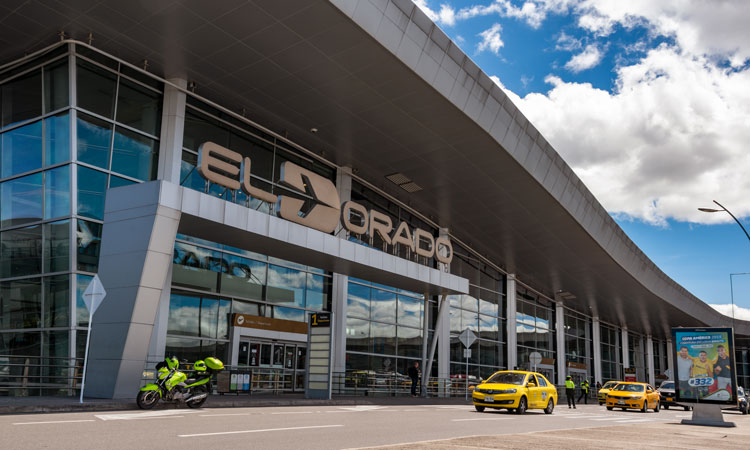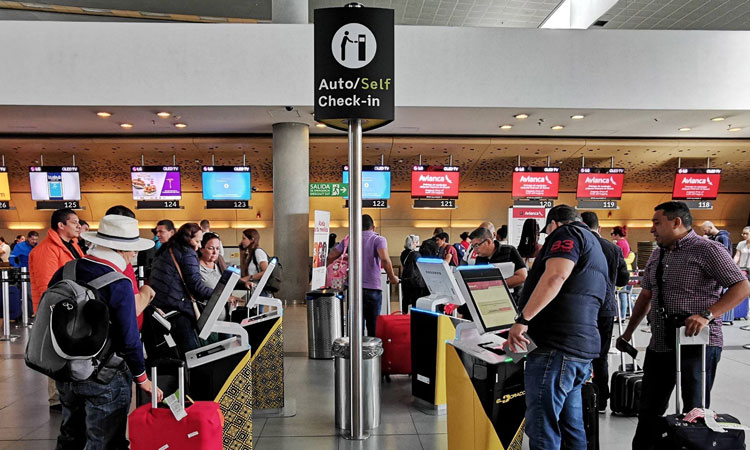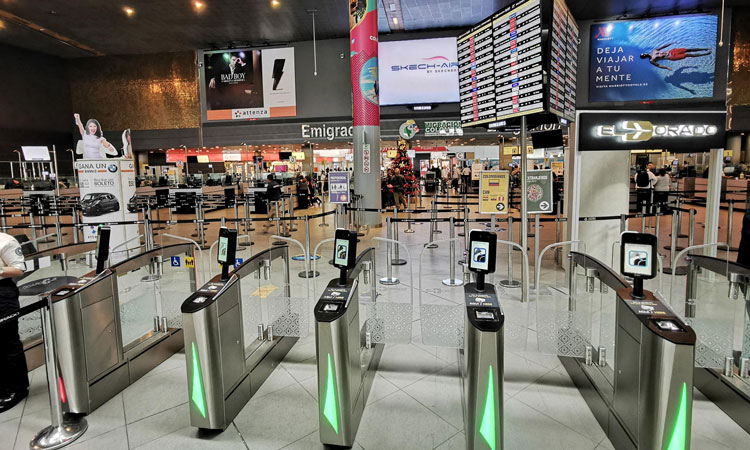El Dorado International Airport advances its technological transformation
- Like
- Digg
- Del
- Tumblr
- VKontakte
- Buffer
- Love This
- Odnoklassniki
- Meneame
- Blogger
- Amazon
- Yahoo Mail
- Gmail
- AOL
- Newsvine
- HackerNews
- Evernote
- MySpace
- Mail.ru
- Viadeo
- Line
- Comments
- Yummly
- SMS
- Viber
- Telegram
- Subscribe
- Skype
- Facebook Messenger
- Kakao
- LiveJournal
- Yammer
- Edgar
- Fintel
- Mix
- Instapaper
- Copy Link
Posted: 10 February 2020 | Fabian Ramos - El Dorado Airport | No comments yet
To handle the increasing demand for air travel in the Latin America region, El Dorado airport has evolved many of its technologies and IT processes. Fabian Ramos, CTO at El Dorado, offers more details on this transformation.


El Dorado International Airport serves Bogotá, Colombia and its surrounding areas as the third busiest airport in Latin America. In 2019 alone, it served over 35 million passengers and 741,000 metric tonnes of cargo. As more Latin Americans adapt their travel preferences, the airport is expected to continue growing.
Overall economic growth is one of the key factors sparking this travel trend. The aviation industry is still growing in Latin America, especially when compared to Europe and the United States. In fact, Juan Carlos Salazar, Director of Colombia’s civil aviation authority, stated that Colombia foresees traffic growing to over 100 million passengers annually by 2030.


The airport sought to modernise and optimise the existing terminals and embrace new ways to increase passenger flow through security and into duty-free shops. To help the airport better meet this expanded demand, El Dorado sought out partners to provide innovations that could enhance passenger processing and the use of biometrics, as well as cyber-security to safeguard the airport from cyber-threats.
Airport IT & Security 2020, International Airport Review’s flagship conference, will delve into the best available technologies used by airports across the world, and present a multitude of successful case studies regarding IT implementation.
Infrastructure transformations at El Dorado
El Dorado’s infrastructure has evolved in the last few years to become a landmark of sustainability, efficiency and technological development; offering the best experiences to travellers. Balancing the infrastructure transformation and the focus on passenger experience is an important part of the challenges that are becoming a reality at El Dorado. This is also imperative to responding to the needs of a country in constant growth that demands innovative and high-impact solutions, both for users and for Colombia.
“With this technological transformation programme, in which we have implemented several improvements in 2019 in coordination with our majority shareholder Odinsa, we seek to implement the latest technological advances in services, which allow our passengers to have a better experience through the terminal, with more seamless processes and self service alternatives at each of the touchpoints,” said González.


Automated check in at El Dorado airport
Technology transformations for passenger experience
There have been many advances focused on enabling comprehensive optimisation with improvements to efficiency and reliable self-service technologies that can reduce wait times.
Migration of common use systems
In August 2019, a new common-use system was implemented, allowing airlines to perform check ins at counters and boarding in the lounges. With this change, the self-checking kiosks were renovated with the installation of the latest technology.
Biometric doors (Biomig)
In conjunction with Migration Colombia, the airport now has biometric doors so that Colombian citizens (initially) can carry out their emigration procedures through the validation of their biometric data (iris), which allows the process to be much more efficient and agile.
Information screens
Touchscreens have been deployed within the terminal so that passengers are able to search for information regarding the different areas of the airport. These screens (Wayfinding v.1.0) offer, in an interactive way, a map that allows the passenger to find a route for a service or store they are looking for inside the terminal.
Automatic pre-security doors
The process of implementing automatic doors that will allow passengers to enter the immigration zone by presenting their boarding card (either on a smart device or printed out) is being completed – the first experience of self-management in the security validation process.
Self bag drop
El Dorado airport has started the installation and configuration phase of a self-bag-drop system that allows the passenger, who has already checked in, to make the delivery of luggage in a self-delivery station without having to go to the counter. Initially, we started installation and configuration phases with some specific airlines, with a wider deployment planned to start in 2021.
Digital environment
Version 2.0 of the mobile application was launched, delivering new functionalities, including pop-up messages that allow passengers to be informed of the status of their flights; a new updated and interactive map; and a renewed directory with the services and shops that can be found at the airport.
Representatives from both El Dorado Airport and OPAIN will be attending Airport IT & Security 2020 in Munich over 19-21 October. Register to join them to ensure you don’t miss out on networking with senior members of the airport IT and security industries.
Further transformations planned
During 2020, the concession will implement a technological platform that will integrate all the information of the vehicles parked at the airport, in order to provide a better experience to the users of this service, who through an application, will be able to generate a prefecture for the value of the service and pay directly through electronic means without having to go through the payment boxes; all this with the intention of avoiding queues and encouraging self-management. There will also be electric stations to recharge electric vehicles.
In 2020, El Dorado will continue its transformation hand in hand with the concession by incorporating new pre-security doors for domestic flights; a queue measurement system to report waiting times; automatic boarding gates; a state-of-the-art announcement system, and other technologies that will be implemented in conjunction with airlines and stakeholders. These transformations are planned and implemented to ensure passengers have a pleasant travel experience at the airport.
As for now, El Dorado is moving into a more modernised future, equipped to keep pace with the growing demands of airline travel in Latin America, while offering a better passenger experience to those entering or departing the Latin America and Caribbean region.


Inside El Dorado Airport’s terminal
Related topics
Biometrics, Digital transformation, Information technology (IT), New technologies, Passenger experience and seamless travel, Terminal operations


















